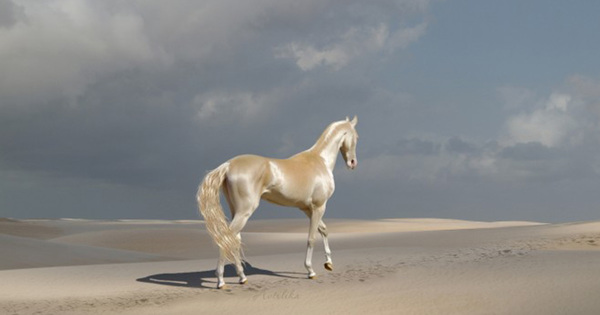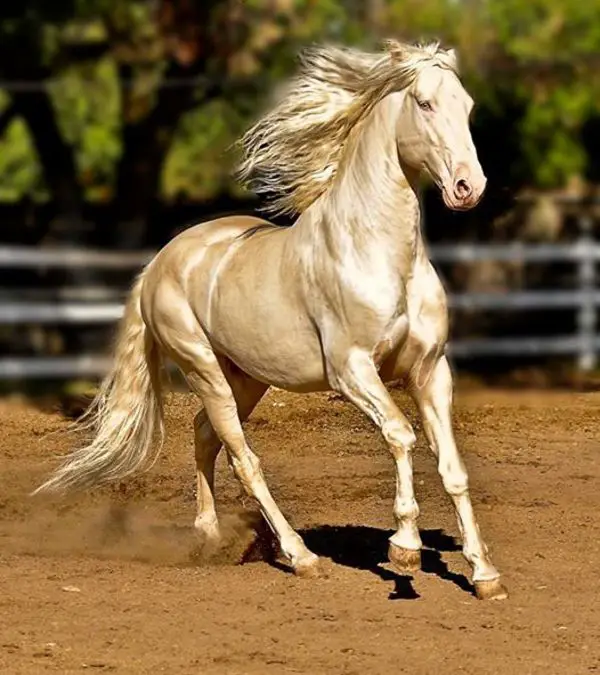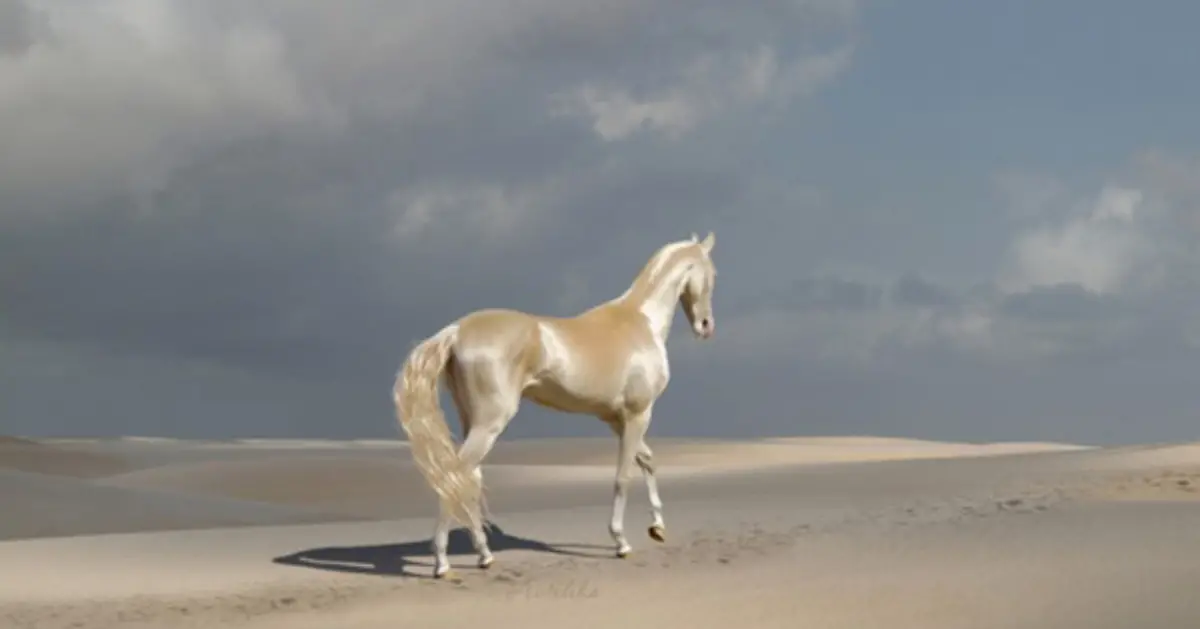Breathlessly echoing across the interwebs is the refrain that he is the world’s most exquisite horse, accompanied by a picture of a stunning Akhal-Teke with a shimmering golden coat. Social media adulation reached a frenzied height, culminating in the horse winning the title of the world’s most beautiful horse through a worldwide vote in a dubious contest.
Despite the contest being exposed as phony, the horse is undoubtedly real and truly a sight to behold. Horse Nation reveals that the horse’s breathtaking, almost otherworldly radiance is a result of its hair structure, which can bend light.

The origins of this equine legend lie in an ardent admirer’s post on social media, which quickly went viral, garnering global admiration. This, in turn, gave rise to the idea that the horse must have won a beauty contest, and not just any contest, but the coveted title of the world’s most beautiful horse. The breed, though with a pedigree dating back to ancient times, only recently gained worldwide recognition, following Turkmenistan’s annexation by Russia in the late 19th century.
The Akhal-Teke, a thoroughbred breed of horse standing between 58 to 64 inches (147 to 163 cm) tall, is renowned for its stunning coat that radiates in the sun. In China, it is revered as ‘the horse from heaven’ for its striking beauty.

This magnificent creature’s gleaming coat is not just for show. Experts reveal that the unique structure of its fur is designed to intensify and reflect light, creating a brilliant shine. It is believed that the Akhal-Teke is born with this golden coat as a form of camouflage in the desert, where its metallic sheen can blend in with the sand and rocks.

The chances of encountering an Akhal-Teke horse, let alone owning one, are slim in present times, with estimates placing their global population at just around 1,250. If the lure of a golden horse has captured your imagination, there are other equally splendid options available in the same shade. While horses come in a vast array of breathtaking colors, owning a golden mount need not be an unattainable dream, although horse ownership can still prove costly.

There’s something undeniably majestic about a golden horse, perhaps influenced by Queen Isabella of Spain, who once banned commoners from owning them, cementing their association with royalty. Alternatively, it may stem from the fairy tale trope of princesses being surrounded by gold, while heroes ride white horses. A more straightforward explanation could be the allure of projecting wealth, power, and privilege through association with the color gold.
Legend has it that Queen Isabella of Spain was so enamored with golden horses that she owned a staggering 100 of them. In the early 1500s, she sent a prized palomino stallion and five mares to Mexico, hoping to spread the seeds of gold in the New World. This proved to be a successful venture, as palominos are now hugely popular in America, renowned for their versatility across a range of equine activities.
The Palomino Horse Association attests to their popularity, listing their use in ranching, racing, rodeos, pleasure riding, parades, shows, fiestas, jumping, trail rides, and more on their website.
Queen Isabella’s ban on commoners owning golden horses is now a thing of the past, and she might well turn in her grave to know that these once-exclusive animals are now accessible to a wider range of enthusiasts.

